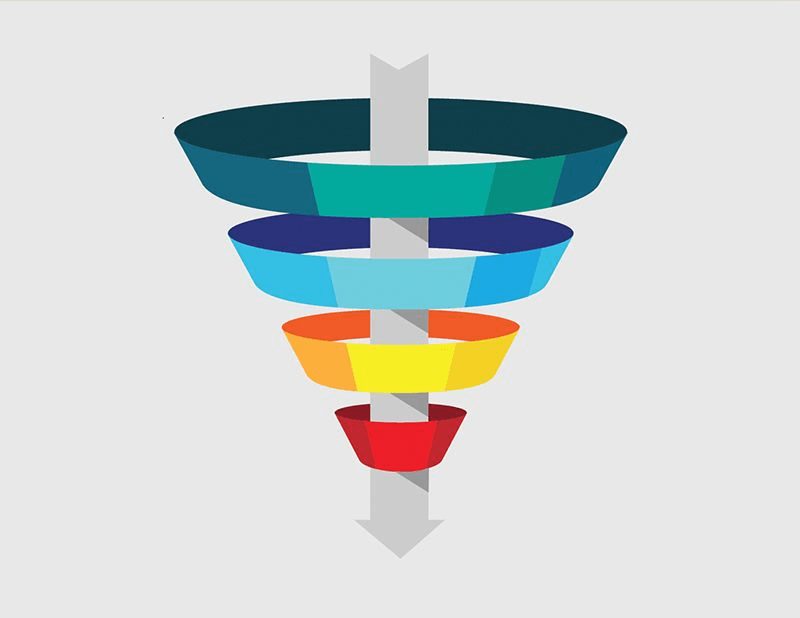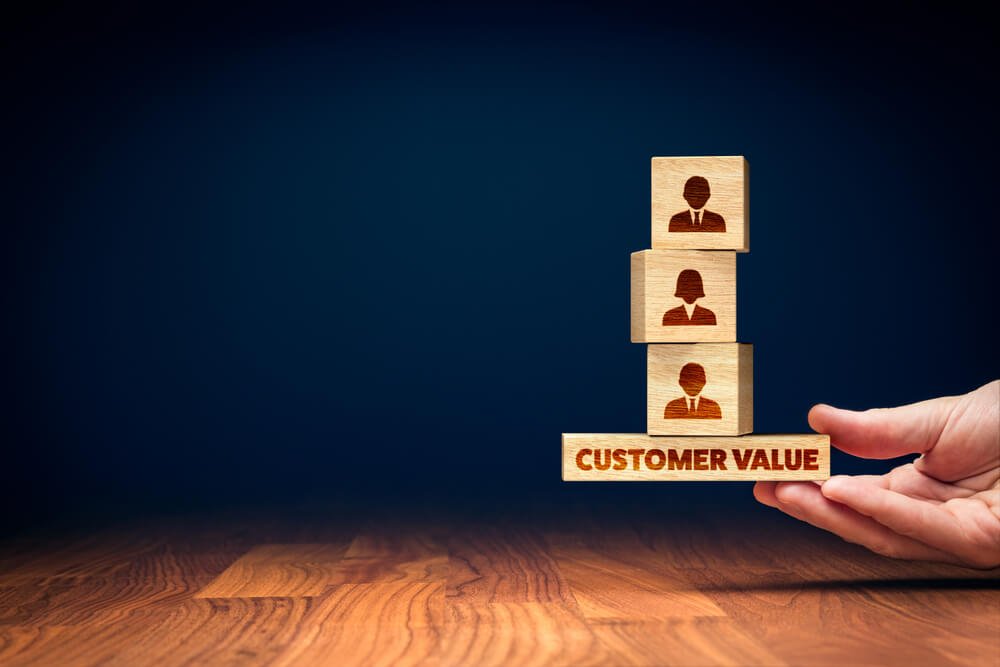
Simple Steps To Build a Great Demand Generation Funnel Plan
How can businesses drive conversions among a sea of brands in San Diego? They need a robust demand generation funnel. Such a funnel attracts, engages, and converts potential customers into loyal advocates. Firms can compete and grow with an effective San Diego demand generation plan.
This guide explores the simple steps to building a highly effective demand generation funnel:
 The demand generation funnel typically consists of multiple stages: awareness, consideration, decision, and advocacy. Each stage represents a different part of the customer’s journey.
The demand generation funnel typically consists of multiple stages: awareness, consideration, decision, and advocacy. Each stage represents a different part of the customer’s journey.
 Marketing channels and tactics act as conduits between businesses and their target audience. Such channels could range from social media platforms to public relations efforts.
The choice of channels and tactics heavily depends on the defined target audience and resources. For instance, if a business’s target audience comprises mainly young adults, using social media platforms such as Instagram or TikTok could be an effective strategy.
On the other hand, for a professional or older audience, channels such as LinkedIn or email marketing might be more beneficial.
Marketing channels and tactics act as conduits between businesses and their target audience. Such channels could range from social media platforms to public relations efforts.
The choice of channels and tactics heavily depends on the defined target audience and resources. For instance, if a business’s target audience comprises mainly young adults, using social media platforms such as Instagram or TikTok could be an effective strategy.
On the other hand, for a professional or older audience, channels such as LinkedIn or email marketing might be more beneficial.
 Once potential customers enter the funnel, businesses need to nurture these leads. The aim is to build relationships with potential customers, engage them, and guide them through the funnel stages.
Companies can nurture connections through regular email marketing, personalized content, and automated follow-up messages. The idea is to stay top-of-mind and to continuously provide value to the leads, moving them closer to the decision stage of the funnel.
Once potential customers enter the funnel, businesses need to nurture these leads. The aim is to build relationships with potential customers, engage them, and guide them through the funnel stages.
Companies can nurture connections through regular email marketing, personalized content, and automated follow-up messages. The idea is to stay top-of-mind and to continuously provide value to the leads, moving them closer to the decision stage of the funnel.
 Continuous improvement is a crucial aspect of a demand generation funnel. Businesses should regularly optimize and refine their strategies based on the data collected and insights gained from tracking and measuring results.
A/B testing is a powerful technique for identifying the most effective tactics. By comparing two variations of an ad, email, or landing page, businesses can determine which version resonates better with their audience. They can then adjust their strategies accordingly.
Experimentation is also a key element of continuous optimization. Businesses should consider testing new channels. They can try different content formats or experiment with different messaging. The objective is to continually evolve the demand generation strategy based on what the data reveals.
Continuous improvement is a crucial aspect of a demand generation funnel. Businesses should regularly optimize and refine their strategies based on the data collected and insights gained from tracking and measuring results.
A/B testing is a powerful technique for identifying the most effective tactics. By comparing two variations of an ad, email, or landing page, businesses can determine which version resonates better with their audience. They can then adjust their strategies accordingly.
Experimentation is also a key element of continuous optimization. Businesses should consider testing new channels. They can try different content formats or experiment with different messaging. The objective is to continually evolve the demand generation strategy based on what the data reveals.
- Define goals.
- Identify the target audience.
- Map out the stages.
- Create content.
- Choose channels and tactics.
- Implement lead capture mechanisms.
- Nurture and engage leads.
- Track and measure results.
- Optimize and refine the funnel.
- Align sales and marketing.
Are you looking for a full-service digital marketing agency? See the DAP difference below!
1. Clarify Your Objectives for Explosive Growth
Creating a successful demand generation funnel begins with defining clear, actionable goals. Goal setting serves as a road map, guiding every step of the demand generation strategy. They may include increasing website traffic, generating leads, improving conversion rates, or boosting revenue. Each goal aligns with a particular stage in the demand generation funnel, providing a marker to measure progress and success.2. Identify and Capture Your Ideal Audience
Understanding the target audience is critical to any San Diego demand generation campaign. Businesses should invest time crafting detailed buyer personas representing their ideal customers. These personas typically include demographic information, preferences, pain points, and behaviors. Comprehensive market research can uncover valuable insights into customers’ needs and motivations. It ensures the demand generation strategies align with the target audience’s interests, leading to more effective results.3. Guide the Customer Journey
 The demand generation funnel typically consists of multiple stages: awareness, consideration, decision, and advocacy. Each stage represents a different part of the customer’s journey.
The demand generation funnel typically consists of multiple stages: awareness, consideration, decision, and advocacy. Each stage represents a different part of the customer’s journey.
- In the awareness stage, potential customers realize they have a problem or need.
- In the consideration stage, they evaluate different solutions to address this need.
- In the decision stage, they choose a solution.
- Finally, in the advocacy stage, satisfied customers become brand advocates.
4. Create Compelling Content That Converts
Content is the heart of demand generation. It serves to attract, engage, and educate potential customers. The types of content businesses create should align with each stage of the funnel.- During the awareness stage, educational content such as blog posts, e-books, and webinars helps potential customers understand their problems.
- In the consideration stage, comparison guides, case studies, and product descriptions assist customers in exploring different solutions.
- For the decision stage, businesses can provide testimonials, reviews, and free trials to convince customers of the value they offer.
- Last, in the advocacy stage, content can encourage customers to share their positive experiences with others.
5. Choose the Right Channels for Maximum Impact
 Marketing channels and tactics act as conduits between businesses and their target audience. Such channels could range from social media platforms to public relations efforts.
The choice of channels and tactics heavily depends on the defined target audience and resources. For instance, if a business’s target audience comprises mainly young adults, using social media platforms such as Instagram or TikTok could be an effective strategy.
On the other hand, for a professional or older audience, channels such as LinkedIn or email marketing might be more beneficial.
Marketing channels and tactics act as conduits between businesses and their target audience. Such channels could range from social media platforms to public relations efforts.
The choice of channels and tactics heavily depends on the defined target audience and resources. For instance, if a business’s target audience comprises mainly young adults, using social media platforms such as Instagram or TikTok could be an effective strategy.
On the other hand, for a professional or older audience, channels such as LinkedIn or email marketing might be more beneficial.
6. Master the Art of Capturing Leads
A lead capture mechanism is a method used to collect contact information from potential customers. It could be through a form on a landing page, a pop-up subscription box, or a call-to-action for a free download. Encouraging potential customers to provide contact information requires businesses to offer incentives, such as a free e-book or exclusive content. Optimizing lead capture mechanisms to make them easily accessible, straightforward, and valuable to potential customers can significantly increase conversion rates.7. Nurture Connections for Long-Term Success
 Once potential customers enter the funnel, businesses need to nurture these leads. The aim is to build relationships with potential customers, engage them, and guide them through the funnel stages.
Companies can nurture connections through regular email marketing, personalized content, and automated follow-up messages. The idea is to stay top-of-mind and to continuously provide value to the leads, moving them closer to the decision stage of the funnel.
Once potential customers enter the funnel, businesses need to nurture these leads. The aim is to build relationships with potential customers, engage them, and guide them through the funnel stages.
Companies can nurture connections through regular email marketing, personalized content, and automated follow-up messages. The idea is to stay top-of-mind and to continuously provide value to the leads, moving them closer to the decision stage of the funnel.
8. Track Key Metrics for Growth
Metrics are vital for assessing the success of a demand generation funnel. Businesses must use analytics tools to track key performance indicators such as conversions, click-through rates, and engagement. Tracking conversions involves monitoring how many leads perform a desired action, including purchasing or signing up for a newsletter. Click-through rates indicate the percentage of people who click on a link or call-to-action, while engagement measures how actively users interact with the content. Understanding these metrics helps businesses identify what works, what does not, and where to improve. In short, it helps them build a data-driven marketing strategy.9. Optimize and Refine the Funnel
 Continuous improvement is a crucial aspect of a demand generation funnel. Businesses should regularly optimize and refine their strategies based on the data collected and insights gained from tracking and measuring results.
A/B testing is a powerful technique for identifying the most effective tactics. By comparing two variations of an ad, email, or landing page, businesses can determine which version resonates better with their audience. They can then adjust their strategies accordingly.
Experimentation is also a key element of continuous optimization. Businesses should consider testing new channels. They can try different content formats or experiment with different messaging. The objective is to continually evolve the demand generation strategy based on what the data reveals.
Continuous improvement is a crucial aspect of a demand generation funnel. Businesses should regularly optimize and refine their strategies based on the data collected and insights gained from tracking and measuring results.
A/B testing is a powerful technique for identifying the most effective tactics. By comparing two variations of an ad, email, or landing page, businesses can determine which version resonates better with their audience. They can then adjust their strategies accordingly.
Experimentation is also a key element of continuous optimization. Businesses should consider testing new channels. They can try different content formats or experiment with different messaging. The objective is to continually evolve the demand generation strategy based on what the data reveals.
10. Synergize Sales and Marketing
The ultimate success of a demand generation funnel relies on the alignment between sales and marketing teams, which must work together to ensure a seamless transition of leads from the funnel to the sales process. Sales and marketing alignment involves sharing goals, strategies, and data. Such collaboration allows the marketing team to generate high-quality leads, and the sales team can effectively convert these leads into customers. A regular feedback loop between the two teams can lead to a better understanding of the buyer’s journey, improved lead scoring, and, ultimately, a more effective demand generation strategy.Summing Up
Implementing a robust demand generation funnel is a powerful strategy to drive business growth in San Diego’s competitive landscape. Applying these steps lets your business attract, engage, and convert prospects into loyal customers. If you need assistance in creating and managing your demand generation funnel, Digital Authority Partners is here to help. We have a proven track record of driving growth through strategic demand generation. Contact us today to transform your marketing efforts and accelerate your business growth.Want To Meet Our Expert Team?
Book a meeting directly here



